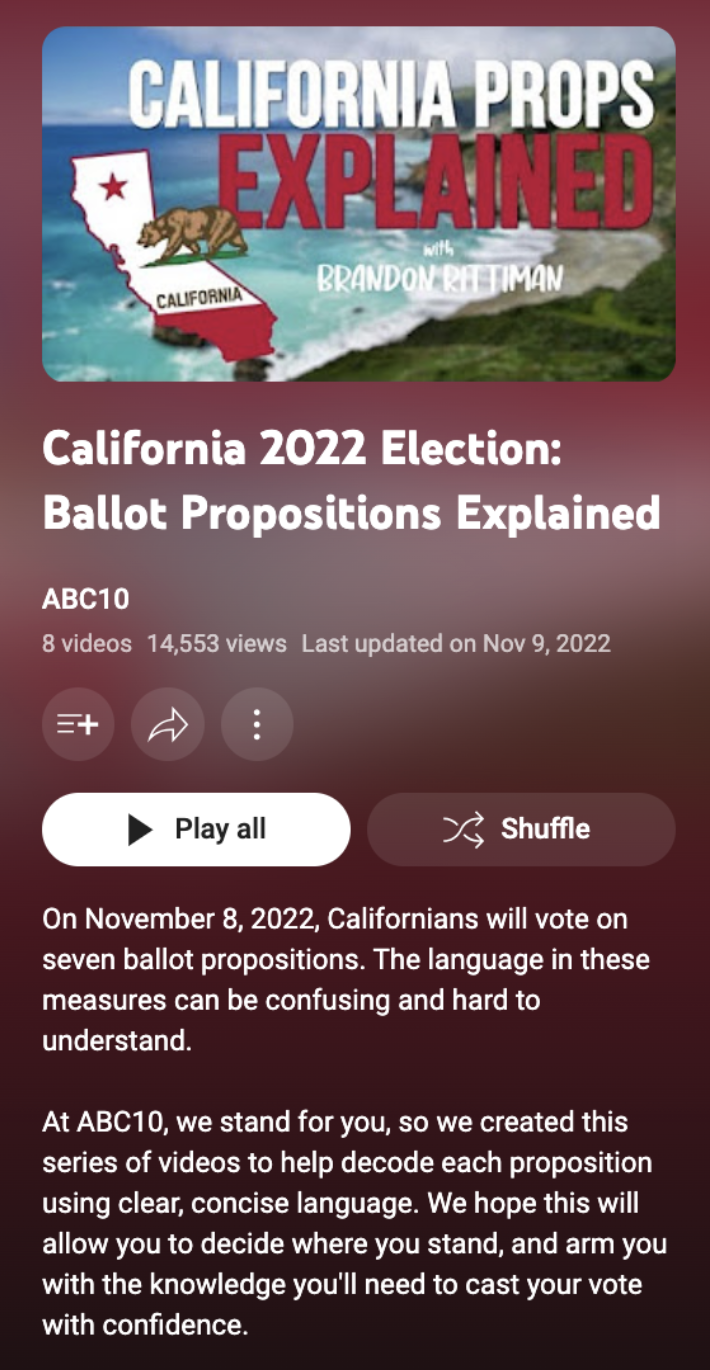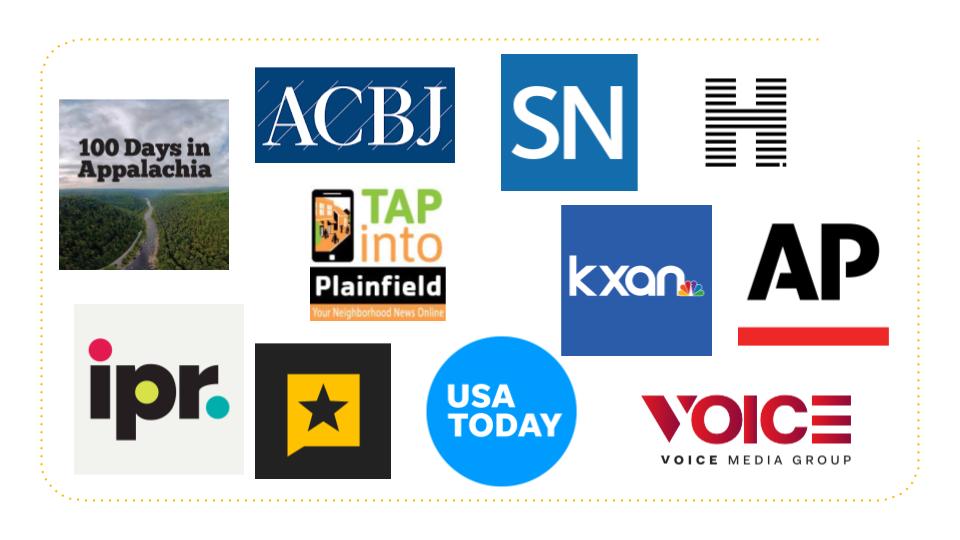
Think about the election reporting you produce or consume. It probably contains information about a ballot initiative or a candidate’s views on a topic, but do you ever notice how those explanations are often woven throughout stories? They’re sandwiched between quotes and part of a larger narrative we’re telling. That’s not always bad, of course. […]
Use video to explain ballot initiatives and candidate viewpoints
Think about the election reporting you produce or consume. It probably contains information about a ballot initiative or a candidate’s views on a topic, but do you ever notice how those explanations are often woven throughout stories? They’re sandwiched between quotes and part of a larger narrative we’re telling.
That’s not always bad, of course. A story focusing on characters can be engaging and grab people’s attention, ultimately, keeping them reading, watching or listening.
But, does this help our audience understand the topic, or help them decipher how they should vote? Does it help them know what the ballot proposal will actually do or how it will impact their community and their family? While trying to tell a story, are we providing them with the basic definitions and explanations they need to really understand the story in the first place?
What if instead of trying to tell a good story, we focused on making sure the specifics of what would happen if a ballot proposal passed or failed were the focus of the story? Imagine if we include some clear-cut definitions and explanations upfront. That way, our audience is primed and ready to dive into the details of ballot proposals and where candidates stand.
By adopting this approach, we help ensure more people have the facts of a proposal and what a politician says they want to do from the beginning. Plus, it sets the stage for us to explore the intricacies of our democracy in greater depth. After all, the more informed and engaged our audience is, the better equipped they are to participate in the democratic process. And people who find your content useful will be more likely to engage with it, instead of avoiding it.
Here’s how ABC10 does this
The ABC10 team in Sacramento has been taking this approach to their election coverage for a few election cycles now. They have been producing and sharing proposition explainers, airing the videos on TV and posting them to YouTube to make them accessible and easy to share on social, in newsletters and elsewhere. They also created a flier with a QR code so people could easily find the videos and watch them to help them cast their votes.
In 2022, the station had eight videos explaining ballot propositions and grouped them in a YouTube playlist. The description for the videos gets right to the point of how they are trying to be helpful.

These videos are effective because:
- They are short and concise. All of the explainer videos are under three minutes, with most being under two minutes in length.
- Information is provided about what happens if you vote “yes” or “no”. Explaining issues this way can help people better understand how their vote may change their community and their daily lives. It connects the implications directly to them, that’s showing the direct impact. In some cases, there also is a connection made between someone’s beliefs on an issue and how they might vote according to those beliefs.
- Context is provided. The videos address possible questions people may have about why the vote is necessary, providing clarity for any confusion people may have about why this is something people are voting on or why the vote is necessary. Some videos also connect the proposition to bigger issues being debated and happening, providing context to how it fits into the larger ecosystem of policies and politics.
- Simple graphics support the script and information. Through the use of simple text graphics and showing the actual language in the propositions, the journalists can reinforce the information and facts. They repeat what a “yes” and “no” vote would mean using the graphics, helping people remember the information after the video ends.
- A connection to the station’s goals is made. The reporter explains why they have produced these videos and where the viewer can find more. They make the connection of wanting to be helpful and useful to viewers and explicitly say that’s why they created these videos.
The news team said they received a lot of positive feedback on the videos, with many viewers saying it was a great resource. People also told the newsroom they wanted to see more videos like this but with a focus on the candidates, not just ballot propositions.
Now, reflect and ask yourself…
Can people find quick explanations about ballot propositions or candidate viewpoints on your website or within your election coverage? Or do they have to watch a 30-minute Q&A video with a candidate or read a lengthy Q&A that includes quotes from the candidate but no comparison to what someone else running would do, or that answers any questions (and instead is just more talking points driven by the candidate).
If you think you could provide content that is more direct and helpful, consider creating separate stories or videos about the issues and candidates your community will be voting on. Providing this information in its own story or inside your stories as a pull-out box will make it easier to find. You may even consider creating content in this format that explains election basics like how voting by mail works, what are absentee ballots and who counts the ballots.
| At Trusting News, we learn how people decide what news to trust and turn that knowledge into actionable strategies for journalists. We train and empower journalists to take responsibility for demonstrating credibility and actively earning trust through transparency and engagement. Learn more about our work, vision and team. Subscribe to our Trust Tips newsletter. Follow us on Twitter and LinkedIn. |

Assistant director Lynn Walsh (she/her) is an Emmy award-winning journalist who has worked in investigative journalism at the national level and locally in California, Ohio, Texas and Florida. She is the former Ethics Chair for the Society of Professional Journalists and a past national president for the organization. Based in San Diego, Lynn is also an adjunct professor and freelance journalist. She can be reached at lynn@TrustingNews.org and on Twitter @lwalsh.





